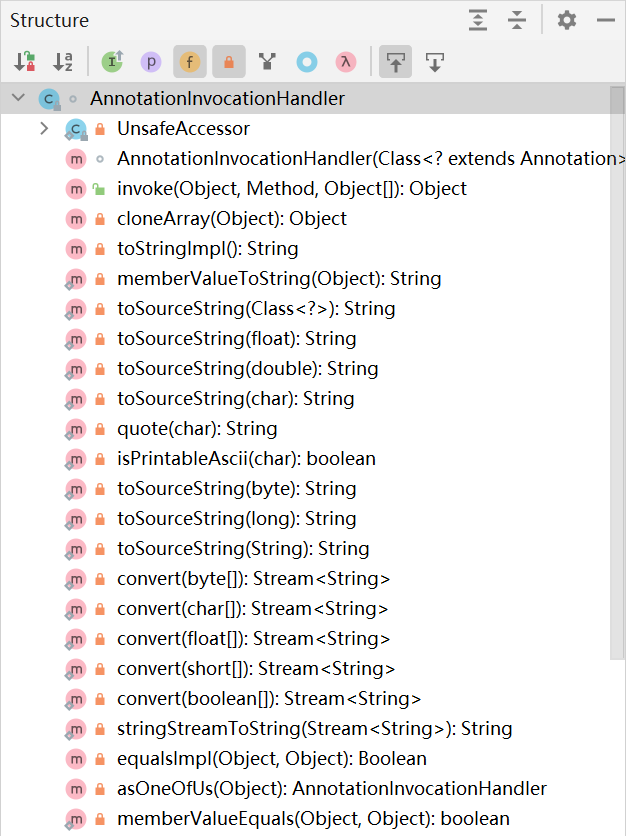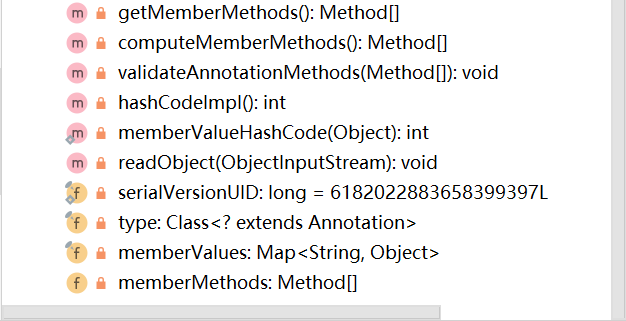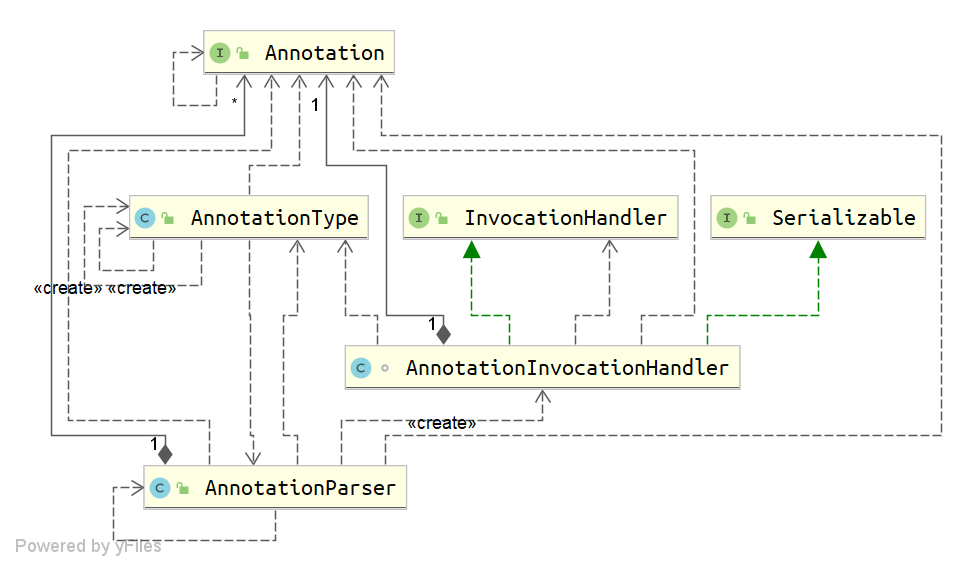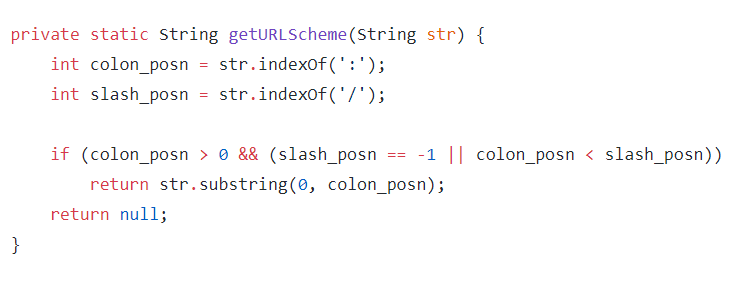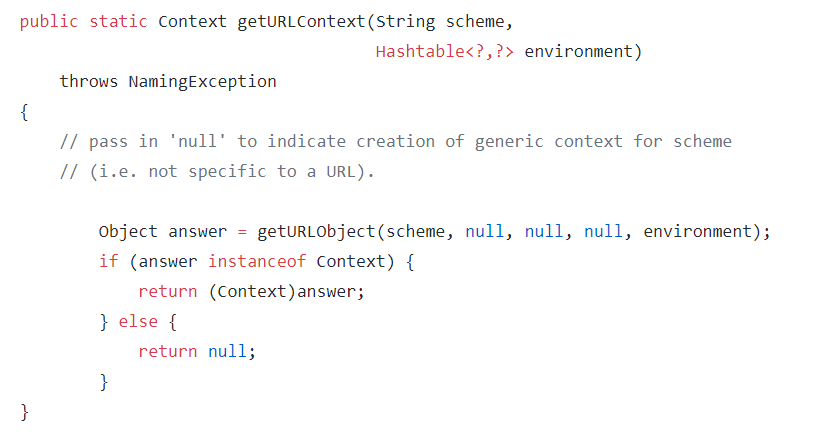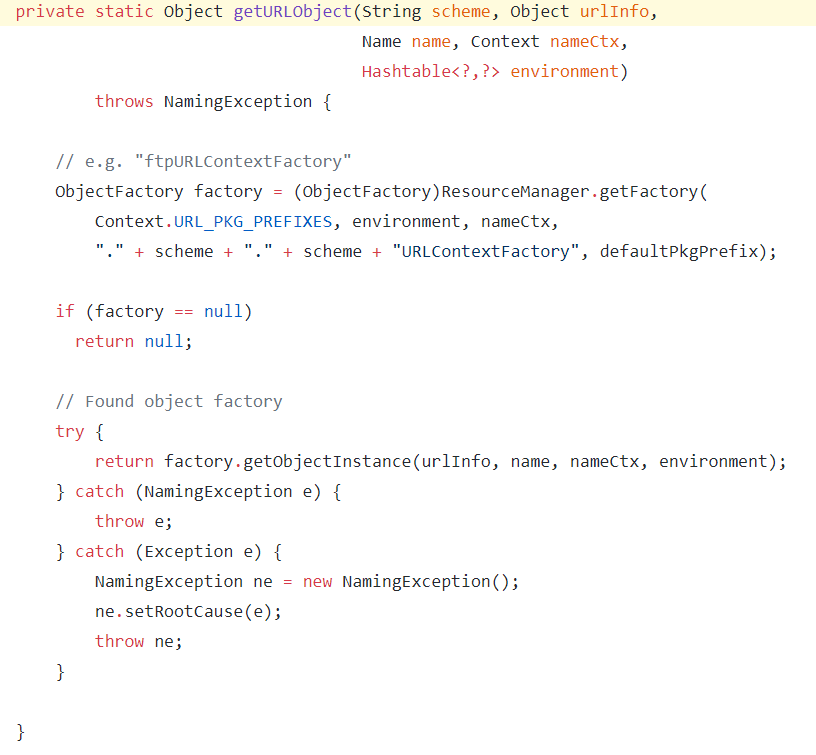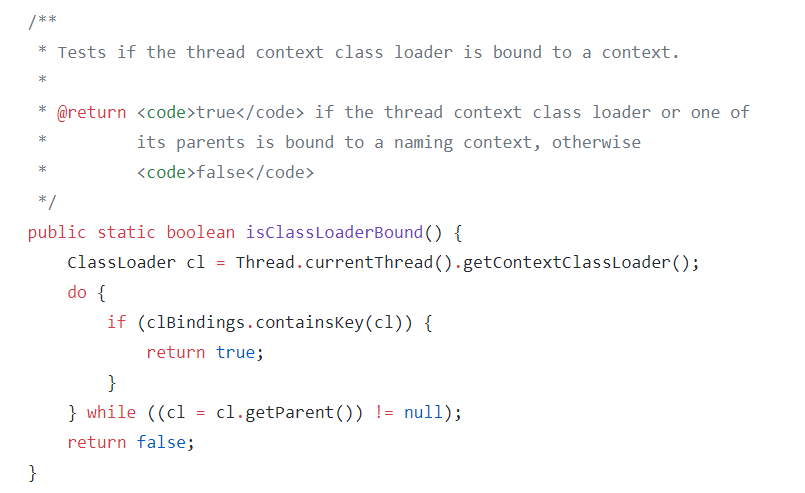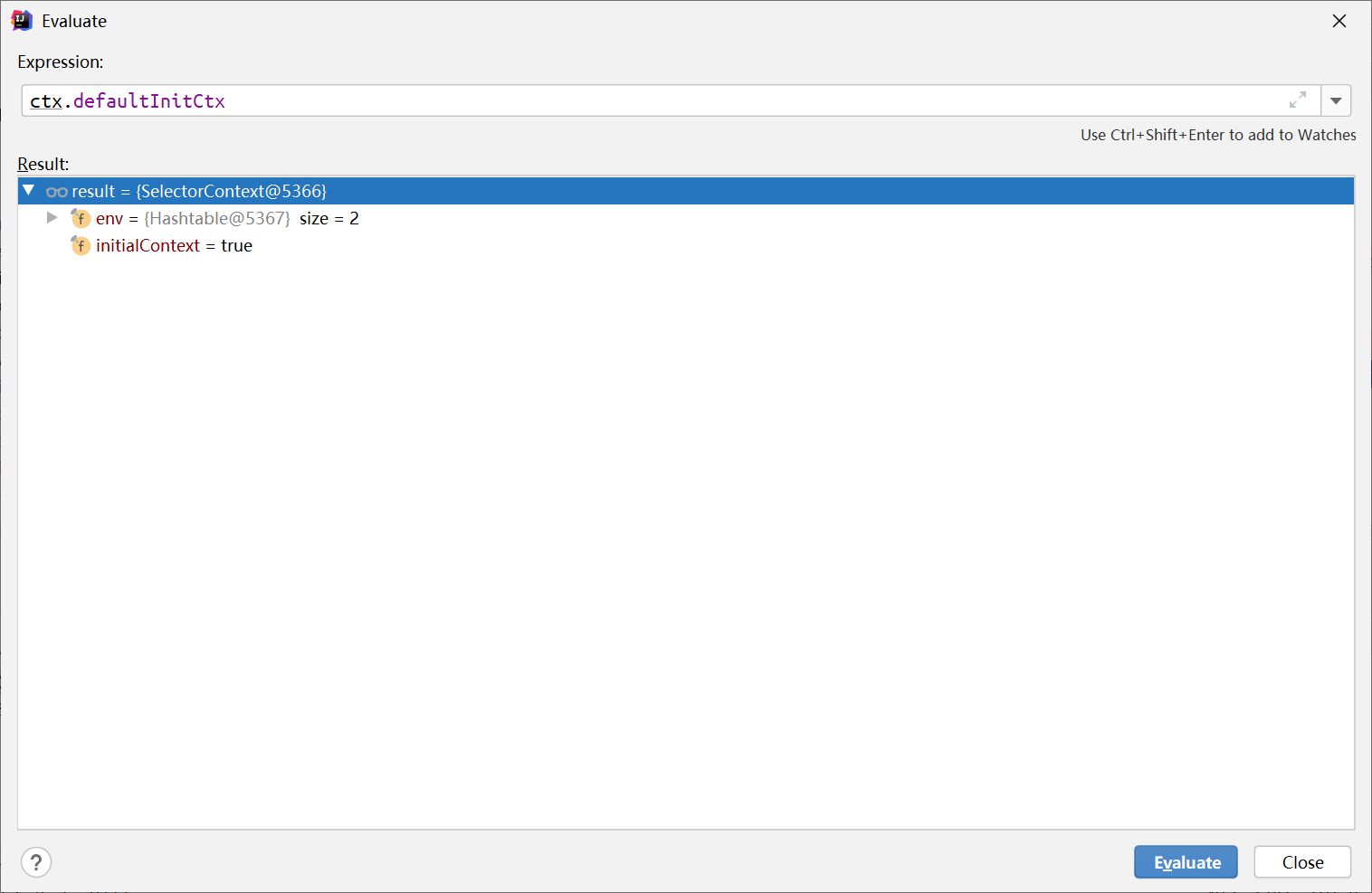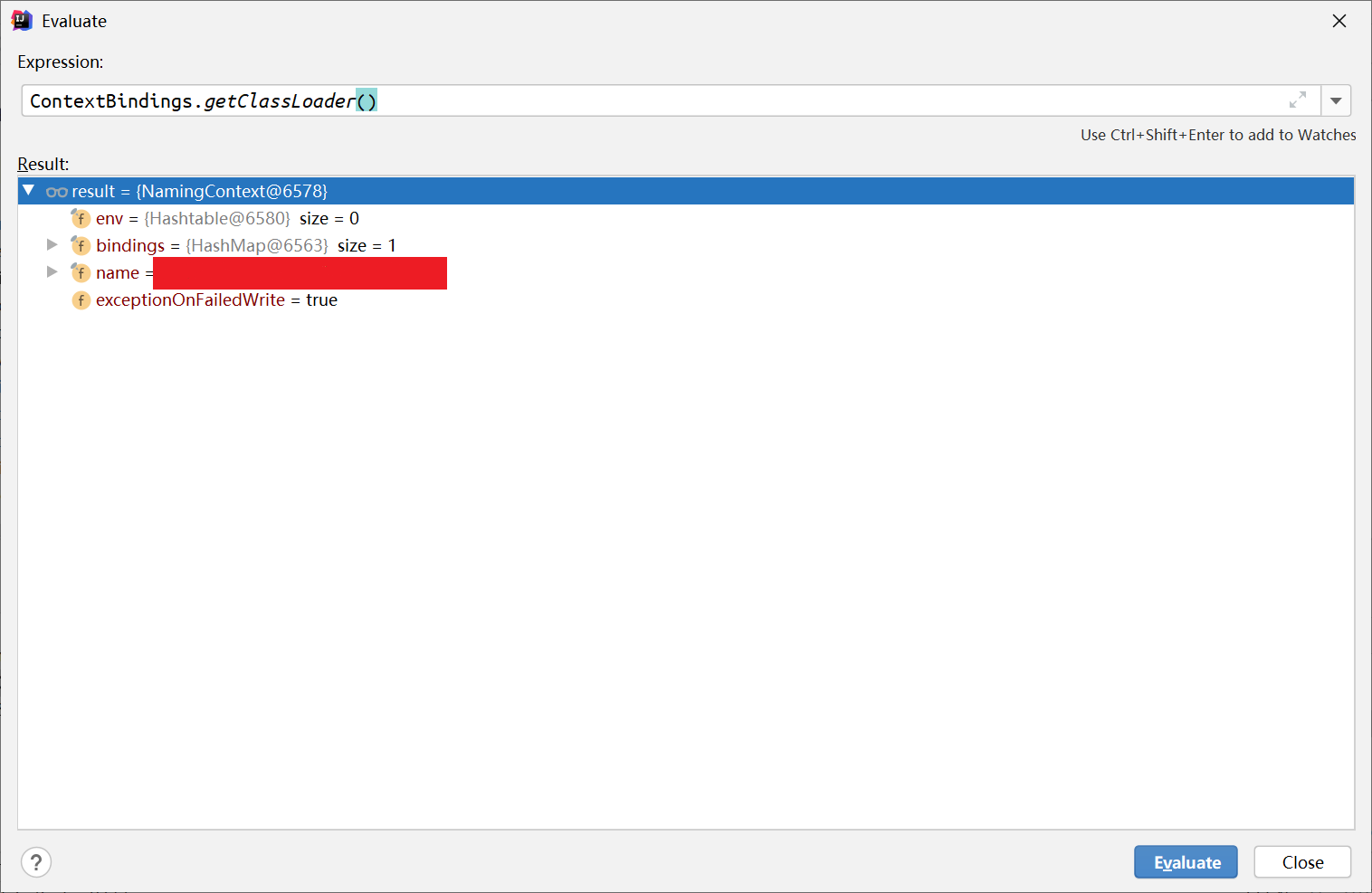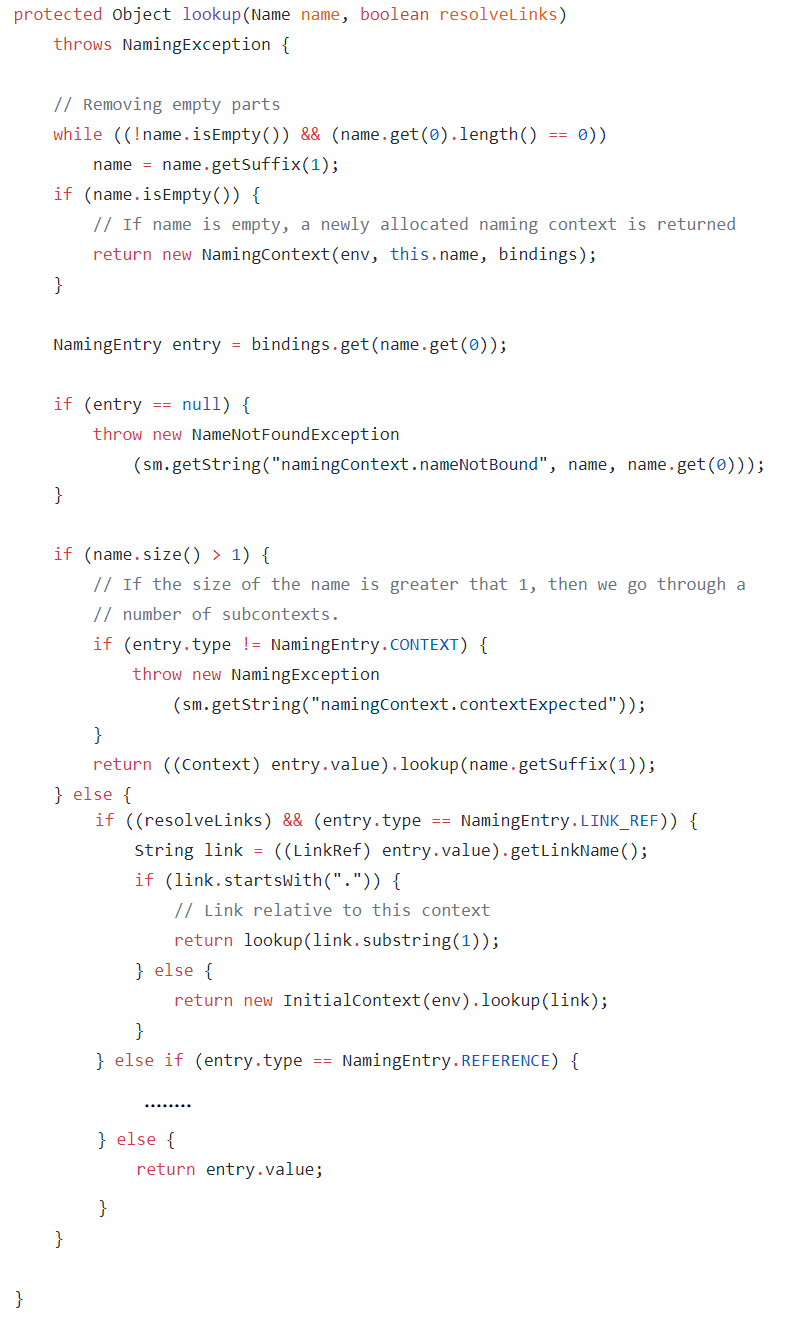写作动机 近期编写了一个基于注解的自动注入功能,于是就对 Java 的注解的工作原理产生了兴趣。下面是我对 Java 注解从编译时的行为到运行时提取注解的行为进行一定的(Java 层面上的)分析,愿能解释 Java 注解的工作原理。
全文约定 定义注解如下:
(运行时可见)
1 2 3 4 5 @Target({ElementType.FIELD, ElementType.TYPE}) @Retention(RetentionPolicy.RUNTIME) public @interface TestRuntimeVisibleAnnotation { String pathInResources () ; }
1 2 3 4 5 6 7 8 @Target({ElementType.TYPE, ElementType.FIELD}) @Retention(RetentionPolicy.RUNTIME) public @interface RuntimeVisibleAnnotation2 { int data () ; Class<?> theClass() default Object.class; }
(出现于 class 文件)
1 2 3 4 @Target(ElementType.TYPE) @Retention(RetentionPolicy.CLASS) public @interface TestClassFileAnnotation {}
(只能被编译器的 APT 处理)
1 2 3 4 @Target(ElementType.TYPE) @Retention(RetentionPolicy.SOURCE) public @interface TestSourceFileAnnotation {}
我们可以知道 @TestRuntimeVisibleAnnotation 和 @RuntimeVisibleAnnotation2 是用来修饰 Field 且在运行时可见的注解,@TestClassFileAnnotation 是用来修饰类型且只能在 Class 文件中可见的注解(不能被运行时查到),@TestSourceFileAnnotation 是一个修饰类型并且只能被编译时的注解处理器 (APT) 处理,class 文件并不可见。
编译时发生的事情 注解一方 编译后的 class 文件成了啥样 我们使用 javap 工具来分析测试 TestRuntimeVisibleAnnotation 的 class 文件
1 javap -v TestRuntimeVisibleAnnotation.class
发现输出如下:
1 2 3 4 5 6 7 8 9 10 11 12 13 14 15 16 17 18 19 20 21 22 23 24 25 26 27 28 29 30 31 32 33 34 35 36 37 38 39 40 41 42 43 44 Compiled from "TestRuntimeVisibleAnnotation.java" public interface TestRuntimeVisibleAnnotation extends java .lang.annotation.Annotation minor version: 65535 major version: 59 flags: (0x2601 ) ACC_PUBLIC, ACC_INTERFACE, ACC_ABSTRACT, ACC_ANNOTATION this_class: #1 super_class: #3 interfaces: 1 , fields: 0 , methods: 1 , attributes: 2 Constant pool: #1 = Class #2 #2 = Utf8 TestRuntimeVisibleAnnotation #3 = Class #4 #4 = Utf8 java/lang/Object #5 = Class #6 #6 = Utf8 java/lang/annotation/Annotation #7 = Utf8 pathInResources #8 = Utf8 ()Ljava/lang/String; #9 = Utf8 SourceFile #10 = Utf8 TestRuntimeVisibleAnnotation.java #11 = Utf8 RuntimeVisibleAnnotations #12 = Utf8 Ljava/lang/annotation/Target; #13 = Utf8 value #14 = Utf8 Ljava/lang/annotation/ElementType; #15 = Utf8 FIELD #16 = Utf8 TYPE #17 = Utf8 Ljava/lang/annotation/Retention; #18 = Utf8 Ljava/lang/annotation/RetentionPolicy; #19 = Utf8 RUNTIME { public abstract java.lang.String pathInResources () ; descriptor: ()Ljava/lang/String; flags: (0x0401 ) ACC_PUBLIC, ACC_ABSTRACT } SourceFile: "TestRuntimeVisibleAnnotation.java" RuntimeVisibleAnnotations: 0 : #12 (#13 =[e#14. #15 ,e#14. #16 ]) java.lang.annotation.Target( value=[Ljava/lang/annotation/ElementType;.FIELD,Ljava/lang/annotation/ElementType;.TYPE] ) 1 : #17 (#13 =e#18. #19 ) java.lang.annotation.Retention( value=Ljava/lang/annotation/RetentionPolicy;.RUNTIME )
根据 Java 虚拟机规范 [1],class 文件的 access_flags 决定了这个类(或变量等)的性质以及访问的权限。
根据 javap 的输出 中的 flags:
(0x2601) ACC_PUBLIC, ACC_INTERFACE, ACC_ABSTRACT, ACC_ANNOTATION
并查表可知:
ACC_PUBLIC: 表示 public 访问权限。
ACC_INTERFACE: 表示这是一个接口。
ACC_ABSTRACT: 这是一个特殊的标识,表示这是抽象的(根据规范,ACC_INTERFACE 存在时,这个也要存在)。
ACC_ANNOTAION: 表示这是一个注解对象。
可知注解的真实身份是一种特殊的接口。它是 java.lang.annotation.Annotation 的子接口。而 String pathInResources(); 最终也变成了这个 “接口” 的方法声明。
使用注解的一方 编译时发生的事情 下面是一个测试类:
1 2 3 4 5 6 7 @TestClassFileAnnotation @TestSourceFileAnnotation public class Class2 { @TestRuntimeVisibleAnnotation(pathInResources = "1") private static final String test = "1" ; }
对这个类进行编译,反编译的结果如下:
我们可以看到,@TestSourceFileAnnotation 消失了,这与这个注解的 @Retention 的值是相匹配的。
由这一过程可以看到,javac 并没有把这个注解写入 class 文件里头。打开 javac 写入 class 文件的代码 [2],并定位到 473 行的 writeJavaAnnotations() 的部分代码如下:
1 2 3 4 5 6 7 8 9 10 11 12 13 14 15 16 17 18 19 20 21 22 23 24 25 26 27 28 29 30 31 32 33 34 35 36 37 int writeJavaAnnotations (List<Attribute.Compound> attrs) { if (attrs.isEmpty()) return 0 ; ListBuffer<Attribute.Compound> visibles = new ListBuffer <>(); ListBuffer<Attribute.Compound> invisibles = new ListBuffer <>(); for (Attribute.Compound a : attrs) { switch (types.getRetention(a)) { case SOURCE: break ; case CLASS: invisibles.append(a); break ; case RUNTIME: visibles.append(a); break ; default : } } int attrCount = 0 ; if (visibles.length() != 0 ) { int attrIndex = writeAttr(names.RuntimeVisibleAnnotations); databuf.appendChar(visibles.length()); for (Attribute.Compound a : visibles) writeCompoundAttribute(a); endAttr(attrIndex); attrCount++; } if (invisibles.length() != 0 ) { } return attrCount; }
编译之后的 class 文件变成了啥样(javap 分析) 我们使用 javap 工具来分析测试类 Class2 的 class 文件
1 javap -p -v Class2.class
发现输出如下:
1 2 3 4 5 6 7 8 9 10 11 12 13 14 15 16 17 18 19 20 21 22 23 24 25 26 27 28 29 30 31 32 33 34 35 36 37 38 39 40 41 42 43 44 45 46 47 48 49 50 51 52 53 54 55 56 57 58 59 60 61 62 63 64 65 Compiled from "Class2.java" public class Class2 minor version: 65535 major version: 59 flags: (0x0021 ) ACC_PUBLIC, ACC_SUPER this_class: #7 super_class: #2 interfaces: 0 , fields: 1 , methods: 1 , attributes: 2 Constant pool: #1 = Methodref #2. #3 #2 = Class #4 #3 = NameAndType #5 :#6 #4 = Utf8 java/lang/Object #5 = Utf8 <init> #6 = Utf8 ()V #7 = Class #8 #8 = Utf8 Class2 #9 = Utf8 test #10 = Utf8 Ljava/lang/String; #11 = Utf8 ConstantValue #12 = String #13 #13 = Utf8 1 #14 = Utf8 RuntimeVisibleAnnotations #15 = Utf8 LTestRuntimeVisibleAnnotation; #16 = Utf8 pathInResources #17 = Utf8 Code #18 = Utf8 LineNumberTable #19 = Utf8 LocalVariableTable #20 = Utf8 this #21 = Utf8 LClass2; #22 = Utf8 SourceFile #23 = Utf8 Class2.java #24 = Utf8 RuntimeInvisibleAnnotations #25 = Utf8 LTestClassFileAnnotation; { private static final java.lang.String test; descriptor: Ljava/lang/String; flags: (0x001a ) ACC_PRIVATE, ACC_STATIC, ACC_FINAL ConstantValue: String 1 RuntimeVisibleAnnotations: 0 : #15 (#16 =s#13 ) TestRuntimeVisibleAnnotation( pathInResources="1" ) public Class2 () ; descriptor: ()V flags: (0x0001 ) ACC_PUBLIC Code: stack=1 , locals=1 , args_size=1 0 : aload_0 1 : invokespecial #1 4 : return LineNumberTable: line 4 : 0 LocalVariableTable: Start Length Slot Name Signature 0 5 0 this LClass2; } SourceFile: "Class2.java" RuntimeInvisibleAnnotations: 0 : #25 () TestClassFileAnnotation
根据输出,我们可以看到 Retention 指定成 RetentionPolicy.CLASS 的注解是写到了被修饰对象属性表的 RuntimeInvisibleAnnotations 项目中。而指定成 RetentionPolicy.RUNTIME 的注解写到了被修饰对象属性表的 RuntimeVisibleAnnotation 项目中。
在 class 文件中表示对注解的引用(字节码的分析) 根据 Class 文件格式规范 [1]
我们发现常量池之后出现的元素的声明的顺序分别是:类本身的有关信息、Field 的信息、方法的信息和修饰在这个类的属性。
我们用十六进制编辑器打开 class 文件,按这个顺序进行人工解析:
发现到 RuntimeVisibleAnnotations 属性的时候,它的属性值和 annotations 的值相同。
根据 Java 虚拟机规范 [1]:
我们对这个属性进行进一步的拆分:
这决定了注解的属性的一部分。但是这需要常量池的配合才能获取完整的属性。
运行时 运行时类型探秘 我们修改一下测试类,探究一下获取到的注解对象的运行时类型:
1 2 3 4 5 6 7 8 9 10 11 12 13 14 15 16 17 18 19 20 21 22 23 24 25 26 27 28 29 30 31 32 33 34 35 36 37 38 39 40 41 42 43 44 45 46 47 48 49 50 51 52 53 54 55 56 57 58 import java.util.Arrays;@TestRuntimeVisibleAnnotation (pathInResources = "class2" )@TestClassFileAnnotation @TestSourceFileAnnotation @RuntimeVisibleAnnotation2 (data = 1 )public class Class2 { @TestRuntimeVisibleAnnotation(pathInResources = "123") private static final String test = "1" ; public static void main (String[] args) { Class<Class2> klass = Class2.class; System.out.println(Arrays.toString(klass.getDeclaredAnnotations())); var annotationObjectOfField = klass.getDeclaredFields()[0 ]. getAnnotation(TestRuntimeVisibleAnnotation.class); var annotationObjectOfClass = klass.getAnnotation(TestRuntimeVisibleAnnotation.class); var anotherAnnotationObjectOfClass = klass.getAnnotation(RuntimeVisibleAnnotation2.class); System.out.println("Hash Code of annotationObjectOfField: " + annotationObjectOfField.hashCode()); System.out.println("Identity Hash Code of annotationObjectOfField: " + System.identityHashCode(annotationObjectOfField)); System.out.println("Class name of annotationObjectOfField: " + annotationObjectOfField.getClass().getName()); System.out.println(); System.out.println("Hash Code of annotationObjectOfClass: " + annotationObjectOfClass.hashCode()); System.out.println("Identity Hash Code of annotationObjectOfClass: " + System.identityHashCode(annotationObjectOfClass)); System.out.println("Class name of annotationObjectOfClass: " + annotationObjectOfClass.getClass().getName()); System.out.println(); System.out.println("Hash Code of anotherAnnotationObjectOfClass: " + anotherAnnotationObjectOfClass.hashCode()); System.out.println("Identity Hash Code of anotherAnnotationObjectOfClass: " + System.identityHashCode(anotherAnnotationObjectOfClass)); System.out.println("Class name of anotherAnnotationObjectOfClass: " + anotherAnnotationObjectOfClass.getClass().getName()); System.out.println(annotationObjectOfField.pathInResources()); } }
运行输出如下:
1 2 3 4 5 6 7 8 9 10 11 12 13 [@TestRuntimeVisibleAnnotation(pathInResources="class2") , @RuntimeVisibleAnnotation2(theClass=java.lang.Object.class, data=1) ] Hash Code of annotationObjectOfField: -995842473 Identity Hash Code of annotationObjectOfField: 1368884364 Class name of annotationObjectOfField: com.sun.proxy.$Proxy1 Hash Code of annotationObjectOfClass: 1806409183 Identity Hash Code of annotationObjectOfClass: 772777427 Class name of annotationObjectOfClass: com.sun.proxy.$Proxy1 Hash Code of anotherAnnotationObjectOfClass: 291781459 Identity Hash Code of anotherAnnotationObjectOfClass: 83954662 Class name of anotherAnnotationObjectOfClass: com.sun.proxy.$Proxy2 123
根据输出中的 Class name of XXX 的结果的 com.sun.proxy.$ProxyX 可以知道,在运行时当中获取的注解的实例,是由动态代理产生的。并且是一个注解一个对应一个类。
Java 标准库对注解的解析 Field 的 getAnnotation 方法 回到 “运行时类型探秘” 的测试类。
1 2 3 4 5 6 var annotationObjectOfField = klass.getDeclaredFields()[0 ]. getAnnotation(TestRuntimeVisibleAnnotation.class); var annotationObjectOfClass = klass.getAnnotation(TestRuntimeVisibleAnnotation.class);var anotherAnnotationObjectOfClass = klass.getAnnotation(RuntimeVisibleAnnotation2.class);
我们从 Field 类的 getAnnotation 方法 [3] 入手。
1 2 3 4 5 6 7 8 9 @Override public <T extends Annotation > T getAnnotation (Class<T> annotationClass) { Objects.requireNonNull(annotationClass); return annotationClass.cast(declaredAnnotations().get(annotationClass)); }
查找修饰 Field 的注解 - declaredAnnotations() 方法 对这个方法的分析如下:
1 2 3 4 5 6 7 8 9 10 11 12 13 14 15 16 17 18 19 20 21 22 23 24 25 26 27 28 29 30 31 private Map<Class<? extends Annotation >, Annotation> declaredAnnotations() { Map<Class<? extends Annotation >, Annotation> declAnnos; if ((declAnnos = declaredAnnotations) == null ) { synchronized (this ) { if ((declAnnos = declaredAnnotations) == null ) { Field root = this .root; if (root != null ) { declAnnos = root.declaredAnnotations(); } else { declAnnos = AnnotationParser.parseAnnotations( annotations, SharedSecrets.getJavaLangAccess() .getConstantPool(getDeclaringClass()), getDeclaringClass()); } declaredAnnotations = declAnnos; } } } return declAnnos; }
对 Field 中的 declaredAnnotation() 方法中的的语句打断点,进行 Debug。根据 Variables,我们获取到这个 Field 的 annotations 的值:
将这个值抄写下来 (十六进制):
1 00 01 00 67 00 01 00 60 73 00 68
根据上文,这是 RuntimeVisibleAnnotations 的属性值。
这表示了注解的数据。
分析注解数据的方法 - parseAnnotation 系列方法 parseAnnotations - 解析多个注解的入口方法 接下来分析 parseAnnotations 方法 [4]。
1 2 3 4 5 6 7 8 9 10 11 12 13 14 15 16 17 public static Map<Class<? extends Annotation >, Annotation> parseAnnotations( byte [] rawAnnotations, ConstantPool constPool, Class<?> container) { if (rawAnnotations == null ) return Collections.emptyMap(); try { return parseAnnotations2(rawAnnotations, constPool, container, null ); } catch (BufferUnderflowException e) { throw new AnnotationFormatError ("Unexpected end of annotations." ); } catch (IllegalArgumentException e) { throw new AnnotationFormatError (e); } }
解析多个注解的 2 号方法 - parseAnnotations2 1 2 3 4 5 6 7 8 9 10 11 12 13 14 15 16 17 18 19 20 21 22 23 24 25 26 27 28 private static Map<Class<? extends Annotation >, Annotation> parseAnnotations2( byte [] rawAnnotations, ConstantPool constPool, Class<?> container, Class<? extends Annotation >[] selectAnnotationClasses) { Map<Class<? extends Annotation >, Annotation> result = new LinkedHashMap <Class<? extends Annotation >, Annotation>(); ByteBuffer buf = ByteBuffer.wrap(rawAnnotations); int numAnnotations = buf.getShort() & 0xFFFF ; for (int i = 0 ; i < numAnnotations; i++) { Annotation a = parseAnnotation2(buf, constPool, container, false , selectAnnotationClasses); if (a != null ) { Class<? extends Annotation > klass = a.annotationType(); if (AnnotationType.getInstance(klass).retention() == RetentionPolicy.RUNTIME && result.put(klass, a) != null ) { throw new AnnotationFormatError ( "Duplicate annotation for class: " +klass+": " + a); } } } return result; }
解析单个注解的 3 号方法 - parseAnnotation2 1 2 3 4 5 6 7 8 9 10 11 12 13 14 15 16 17 18 19 20 21 22 23 24 25 26 27 28 29 30 31 32 33 34 35 36 37 38 39 40 41 42 43 44 45 46 47 48 49 50 51 52 53 54 55 56 57 58 59 60 61 62 63 64 65 66 67 68 69 70 71 72 73 74 75 76 private static Annotation parseAnnotation2 (ByteBuffer buf, ConstantPool constPool, Class<?> container, boolean exceptionOnMissingAnnotationClass, Class<? extends Annotation>[] selectAnnotationClasses) { int typeIndex = buf.getShort() & 0xFFFF ; Class<? extends Annotation > annotationClass = null ; String sig = "[unknown]" ; try { try { sig = constPool.getUTF8At(typeIndex); annotationClass = (Class<? extends Annotation >)parseSig(sig, container); } catch (IllegalArgumentException ex) { annotationClass = (Class<? extends Annotation >)constPool.getClassAt(typeIndex); } } catch (NoClassDefFoundError | TypeNotPresentException e) { return null ; } if (selectAnnotationClasses != null && !contains(selectAnnotationClasses, annotationClass)) { skipAnnotation(buf, false ); return null ; } AnnotationType type = null ; try { type = AnnotationType.getInstance(annotationClass); } catch (IllegalArgumentException e) { skipAnnotation(buf, false ); return null ; } Map<String, Class<?>> memberTypes = type.memberTypes(); Map<String, Object> memberValues = new LinkedHashMap <String, Object>(type.memberDefaults()); int numMembers = buf.getShort() & 0xFFFF ; for (int i = 0 ; i < numMembers; i++) { int memberNameIndex = buf.getShort() & 0xFFFF ; String memberName = constPool.getUTF8At(memberNameIndex); Class<?> memberType = memberTypes.get(memberName); if (memberType == null ) { skipMemberValue(buf); } else { Object value = parseMemberValue(memberType, buf, constPool, container); if (value instanceof AnnotationTypeMismatchExceptionProxy) ((AnnotationTypeMismatchExceptionProxy) value). setMember(type.members().get(memberName)); memberValues.put(memberName, value); } } return annotationForMap(annotationClass, memberValues); }
注解属性值的获取 - AnnotationParser.parseMemberValue 1 2 3 4 5 6 7 8 9 10 11 12 13 14 15 16 17 18 19 20 21 22 23 24 25 26 27 28 29 30 31 32 public static Object parseMemberValue (Class<?> memberType, ByteBuffer buf, ConstantPool constPool, Class<?> container) { Object result = null ; int tag = buf.get(); switch (tag) { case 'e' : return parseEnumValue((Class<? extends Enum <?>>)memberType, buf, constPool, container); case 'c' : result = parseClassValue(buf, constPool, container); break ; case '@' : result = parseAnnotation(buf, constPool, container, true ); break ; case '[' : return parseArray(memberType, buf, constPool, container); default : result = parseConst(tag, buf, constPool); } if (!(result instanceof ExceptionProxy) && !memberType.isInstance(result)) result = new AnnotationTypeMismatchExceptionProxy ( result.getClass() + "[" + result + "]" ); return result; }
AnnotationType 反射对象的建立 [5] 根据上文,AnnotationType 的主要作用是用来保存这个注解的共有信息的。比如这个注解属性的键。
getInstance() 工厂方法 1 2 3 4 5 6 7 8 9 10 11 12 13 14 15 16 17 18 19 20 21 22 23 24 25 26 27 28 29 30 31 32 33 public static AnnotationType getInstance ( Class<? extends Annotation> annotationClass) { JavaLangAccess jla = SharedSecrets.getJavaLangAccess(); AnnotationType result = jla.getAnnotationType(annotationClass); if (result == null ) { result = new AnnotationType (annotationClass); if (!jla.casAnnotationType(annotationClass, null , result)) { result = jla.getAnnotationType(annotationClass); assert result != null ; } } return result; }
AnnotationType 的私有构造器 1 2 3 4 5 6 7 8 9 10 11 12 13 14 15 16 17 18 19 20 21 22 23 24 25 26 27 28 29 30 31 32 33 34 35 36 37 38 39 40 41 42 43 44 45 46 47 48 49 50 51 52 53 54 55 56 57 58 59 60 61 62 63 64 65 66 67 68 69 70 private AnnotationType (final Class<? extends Annotation> annotationClass) { if (!annotationClass.isAnnotation()) throw new IllegalArgumentException ("Not an annotation type" ); Method[] methods = AccessController.doPrivileged(new PrivilegedAction <>() { public Method[] run() { return annotationClass.getDeclaredMethods(); } }); memberTypes = new HashMap <>(methods.length+1 , 1.0f ); memberDefaults = new HashMap <>(0 ); members = new HashMap <>(methods.length+1 , 1.0f ); for (Method method : methods) { if (Modifier.isPublic(method.getModifiers()) && Modifier.isAbstract(method.getModifiers()) && !method.isSynthetic()) { if (method.getParameterCount() != 0 ) { throw new IllegalArgumentException (method + " has params" ); } String name = method.getName(); Class<?> type = method.getReturnType(); memberTypes.put(name, invocationHandlerReturnType(type)); members.put(name, method); Object defaultValue = method.getDefaultValue(); if (defaultValue != null ) { memberDefaults.put(name, defaultValue); } } } if (annotationClass != Retention.class && annotationClass != Inherited.class) { JavaLangAccess jla = SharedSecrets.getJavaLangAccess(); Map<Class<? extends Annotation >, Annotation> metaAnnotations = AnnotationParser.parseSelectAnnotations( jla.getRawClassAnnotations(annotationClass), jla.getConstantPool(annotationClass), annotationClass, Retention.class, Inherited.class ); Retention ret = (Retention) metaAnnotations.get(Retention.class); retention = (ret == null ? RetentionPolicy.CLASS : ret.value()); inherited = metaAnnotations.containsKey(Inherited.class); } else { retention = RetentionPolicy.RUNTIME; inherited = false ; } }
注解的运行时对象(动态代理对象)的生成 根据上文对注解的分析,我们知道注解是一种特殊的接口。既然是接口,那么肯定就要有接口的实现。根据刚刚的分析,我们可以知道注解的运行时类型是一个动态代理对象。在分析注解的动态代理对象的具体行为之前,我们先来回顾一下动态代理。
动态代理的回顾 1 2 3 4 5 6 7 8 9 10 11 12 13 14 15 16 17 18 19 20 21 22 23 24 25 26 27 28 29 30 31 32 33 34 35 36 37 38 39 40 41 42 43 44 45 46 47 48 49 50 51 52 53 54 55 56 57 58 59 60 61 62 63 64 65 66 67 68 69 70 71 72 package ac.testproj.invoke;import java.lang.reflect.InvocationHandler;import java.lang.reflect.Method;import java.lang.reflect.Proxy;class MyInvocationHandler implements InvocationHandler { @Override public Object invoke (Object proxy, Method method, Object[] args) throws Throwable { System.out.println("Invoking method: " + method.getName()); switch (method.getName()) { case "hashCode" : return super .hashCode(); case "equals" : return super .equals(args[0 ]); case "toString" : return super .toString(); default : break ; } if (method.getParameterCount() != 0 ) { System.out.println("Received a number: " + args[0 ]); return ((Integer) args[0 ]) + 1 ; } return null ; } } interface Action { void act1 () ; void act2 () ; int act3 (int val) ; } public class TestInvocationHandler { public static void main (String[] args) { System.getProperties().put("jdk.proxy.ProxyGenerator.saveGeneratedFiles" , "true" ); var proxy = (Action) Proxy.newProxyInstance(TestInvocationHandler.class.getClassLoader(), new Class [] {Action.class}, new MyInvocationHandler ()); proxy.act1(); proxy.act2(); System.out.println("Got Return in act3: " + proxy.act3(1 )); System.out.println(proxy.getClass().getName()); } }
输出如下:
1 2 3 4 5 6 Invoking method: act1 Invoking method: act2 Invoking method: act3 Received a number: 1 Got Return in act3: 2 ac.testproj.invoke.$Proxy0
运行后工作目录出现了生成的 class 文件:
经过反编译,发现生成的代码如下(节选部分且顺序经过调整):
1 2 3 4 5 6 7 8 9 10 11 12 13 14 15 16 17 18 19 20 21 22 23 24 25 26 27 28 29 30 31 32 33 34 35 36 37 38 39 40 41 42 43 44 45 46 47 48 49 50 51 52 53 54 55 56 57 58 59 60 61 62 package ac.testproj.invoke;import java.lang.reflect.InvocationHandler;import java.lang.reflect.Method;import java.lang.reflect.Proxy;import java.lang.reflect.UndeclaredThrowableException;final class $Proxy0 extends Proxy implements Action { private static Method m0; private static Method m1; private static Method m2; private static Method m3; private static Method m4; private static Method m5; static { try { m0 = Class.forName("java.lang.Object" ).getMethod("hashCode" ); m1 = Class.forName("java.lang.Object" ) .getMethod("equals" , Class.forName("java.lang.Object" )); m2 = Class.forName("java.lang.Object" ).getMethod("toString" ); m3 = Class.forName("ac.testproj.invoke.Action" ).getMethod("act3" , Integer.TYPE); m4 = Class.forName("ac.testproj.invoke.Action" ).getMethod("act2" ); m5 = Class.forName("ac.testproj.invoke.Action" ).getMethod("act1" ); } catch (NoSuchMethodException var2) { throw new NoSuchMethodError (var2.getMessage()); } catch (ClassNotFoundException var3) { throw new NoClassDefFoundError (var3.getMessage()); } } public $Proxy0(InvocationHandler param1) { super (param1); } public final int act3 (int var1) { try { return (Integer)super .h.invoke(this , m3, new Object []{var1}); } catch (RuntimeException | Error var2) { throw var2; } catch (Throwable var3) { throw new UndeclaredThrowableException (var3); } } public final void act2 () { try { super .h.invoke(this , m4, (Object[])null ); } catch (RuntimeException | Error var2) { throw var2; } catch (Throwable var3) { throw new UndeclaredThrowableException (var3); } } public final void act1 () { } public final int hashCode () { } public final boolean equals (Object var1) { } public final String toString () { } }
根据生成的中间代码我们可以看出,动态代理实际上是在内存中(如果没有指定保存到硬盘上的话)生成一个中间代理类,这个代理类继承了 Proxy 类,并实现了我们指定的接口和 Serializable 接口(由 Proxy 类实现)。其将所有的方法(包括我们指定的接口以及 Object 类的方法)委托给传入的 InvocationHandler。由此证实 InvocationHandler 封装了动态代理类的行为。
注解的动态代理对象的建立 来到 annotationforMap 方法。
1 2 3 4 5 6 7 8 9 10 11 12 13 public static Annotation annotationForMap (final Class<? extends Annotation> type, final Map<String, Object> memberValues) { return AccessController.doPrivileged(new PrivilegedAction <Annotation>() { public Annotation run () { return (Annotation) Proxy.newProxyInstance( type.getClassLoader(), new Class <?>[] { type }, new AnnotationInvocationHandler (type, memberValues)); }}); }
由此可见注解的方法调用的有关行为都交给了 AnnotationInvocationHandler 这一 InvocationHandler (行为封装)。
注解的动态代理对象行为的分析 根据上述信息,我们来到 AnnotationInvocationHandler 这个类 [7]。
首先来看下这个类的结构。
我们可以看见有很多的方法(主要是 hashCode 等方法的实现)下面我们来逐一分析。
动态代理对象总的行为 - invoke 方法 1 2 3 4 5 6 7 8 9 10 11 12 13 14 15 16 17 18 19 20 21 22 23 24 25 26 27 28 29 30 31 32 33 34 35 36 37 38 39 40 41 42 43 44 45 public Object invoke (Object proxy, Method method, Object[] args) { String member = method.getName(); int parameterCount = method.getParameterCount(); if (parameterCount == 1 && member == "equals" && method.getParameterTypes()[0 ] == Object.class) { return equalsImpl(proxy, args[0 ]); } if (parameterCount != 0 ) { throw new AssertionError ("Too many parameters for an annotation method" ); } if (member == "toString" ) { return toStringImpl(); } else if (member == "hashCode" ) { return hashCodeImpl(); } else if (member == "annotationType" ) { return type; } Object result = memberValues.get(member); if (result == null ) throw new IncompleteAnnotationException (type, member); if (result instanceof ExceptionProxy) throw ((ExceptionProxy) result).generateException(); if (result.getClass().isArray() && Array.getLength(result) != 0 ) result = cloneArray(result); return result; }
hashCode 方法的实现 - hashCodeImpl() 1 2 3 4 5 6 7 8 9 private int hashCodeImpl () { int result = 0 ; for (Map.Entry<String, Object> e : memberValues.entrySet()) { result += (127 * e.getKey().hashCode()) ^ memberValueHashCode(e.getValue()); } return result; }
我们发现 result += … 的这句话的做法非常像 HashMap 的 hash 方法 [8]:
1 2 3 4 5 6 7 8 9 10 11 12 13 14 15 16 17 18 19 20 static final int hash (Object key) { int h; return (key == null ) ? 0 : (h = key.hashCode()) ^ (h >>> 16 ); }
hash 方法主要是通过将高 16 位无符号右移 16 位跟低 16 位对齐,并对低 16 位进行异或操作(用异或的原因见备注 3)。这个操作的主要目的是减缓在某些情况下的 hash 冲突。
而注解的 hashCodeImpl 的意图是对键值对的 hash 值进行均匀混合。
equals 方法的实现 - equalsImpl(Object, Object) 1 2 3 4 5 6 7 8 9 10 11 12 13 14 15 16 17 18 19 20 21 22 23 24 25 26 27 28 29 30 31 32 33 34 35 36 private Boolean equalsImpl (Object proxy, Object o) { if (o == proxy) return true ; if (!type.isInstance(o)) return false ; for (Method memberMethod : getMemberMethods()) { String member = memberMethod.getName(); Object ourValue = memberValues.get(member); Object hisValue = null ; AnnotationInvocationHandler hisHandler = asOneOfUs(o); if (hisHandler != null ) { hisValue = hisHandler.memberValues.get(member); } else { try { hisValue = memberMethod.invoke(o); } catch (InvocationTargetException e) { return false ; } catch (IllegalAccessException e) { throw new AssertionError (e); } } if (!memberValueEquals(ourValue, hisValue)) return false ; } return true ; }
本文所提到有关注解的 Java 标准库的 UML 图
总结
注解本身在 class 文件上来看是一种特殊的接口,它的 “实现” 由动态代理和 AnnotationInvocationHandler 给予。
实际上使用注解的时候注解的有关信息是存在 class 文件被修饰元素部分的 Runtime(In)visibleAnnotations 的属性表里头的。
注解的解析逻辑在 sun.reflect.annotation.AnnotationParser 里头。
注解在运行时的对象是由动态代理产生的,其行为封装在 sun.reflect.annotation.AnnotationInvocationHandler 类里头,实现了被解析的注解这一 “接口” 。
注解本身在运行时里头也有个代表它本身,且用来存储共同信息的对象 sun.reflect.annotation.AnnotationType
备注:
使用 Oracle OpenJDK 15 编译,并启动了预览功能。
SharedSecrets 以及一系列 Access 结尾的接口主要是为了能让内部实现包(即不是 java 和 javax 开头的那些包)能够不使用反射地访问到 java 和 javax 的包当中没有公开的方法(即包访问控制符的那些方法)。这些接口的实现比较分散,但是几乎都是在某个类的一个方法中调用 SharedSecrets.setXXXAccess (并传入一个匿名内部类)。比如 JavaLangAccess 的实现在 System 类的 setJavaLangAccess() 当中的一个匿名内部类。这解决了访问控制符的语法规定和内部实现类跨包访问的矛盾。
进行异或操作的主要原因是它产生的结果的概率是相等的。
因为根据真值表:
X
Y
输出 (X ^ Y)
1
0
1
0
1
1
1
1
0
0
0
0
P (X ^ Y = 1) = 2 / 4 = 1 / 2
P (X ^ Y = 0) = 2 / 4 = 1 / 2
两者相等。
引用和参考:
[1] The Java Virtual Machine Specification, Java SE 15 Edition
https://docs.oracle.com/javase/specs/jvms/se15/jvms15.pdf
[2] openJDK - com.sun.tools.javac.jvm.ClassWriter
https://github.com/openjdk/jdk15/blob/master/src/jdk.compiler/share/classes/com/sun/tools/javac/jvm/ClassWriter.java
[3] openJDK - java.lang.reflect.Field
https://github.com/openjdk/jdk15/blob/master/src/java.base/share/classes/java/lang/reflect/Field.java
[4] openJDK - sun.reflect.annotation.AnnotationParser
https://github.com/openjdk/jdk15/blob/master/src/java.base/share/classes/sun/reflect/annotation/AnnotationParser.java
[5] openJDK - sun.reflect.annotation.AnnotationType
https://github.com/openjdk/jdk15/blob/master/src/java.base/share/classes/sun/reflect/annotation/AnnotationType.java
[6] JDK动态代理生成的class文件保存到本地失败问题(sun.misc.ProxyGenerator.saveGeneratedFiles)
https://blog.csdn.net/zyq8514700/article/details/99892329
[7] openJDK - sun.reflect.annotation.AnnotationInvocationHandler
https://github.com/openjdk/jdk15/blob/master/src/java.base/share/classes/sun/reflect/annotation/AnnotationInvocationHandler.java
[8] openJDK - java.util.HashMap
https://github.com/openjdk/jdk15/blob/master/src/java.base/share/classes/java/util/HashMap.java
[ TART - JDK - T2 - Y21 (1) ] @HQ
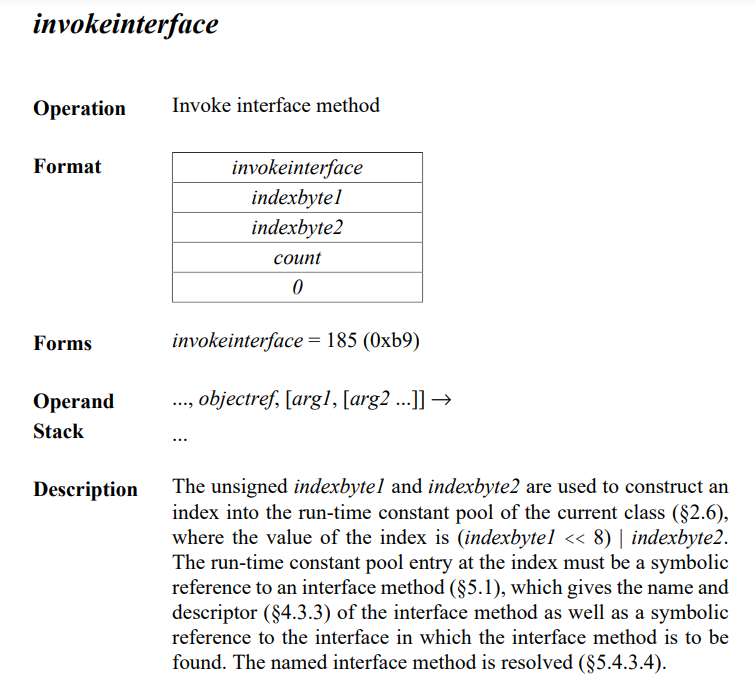
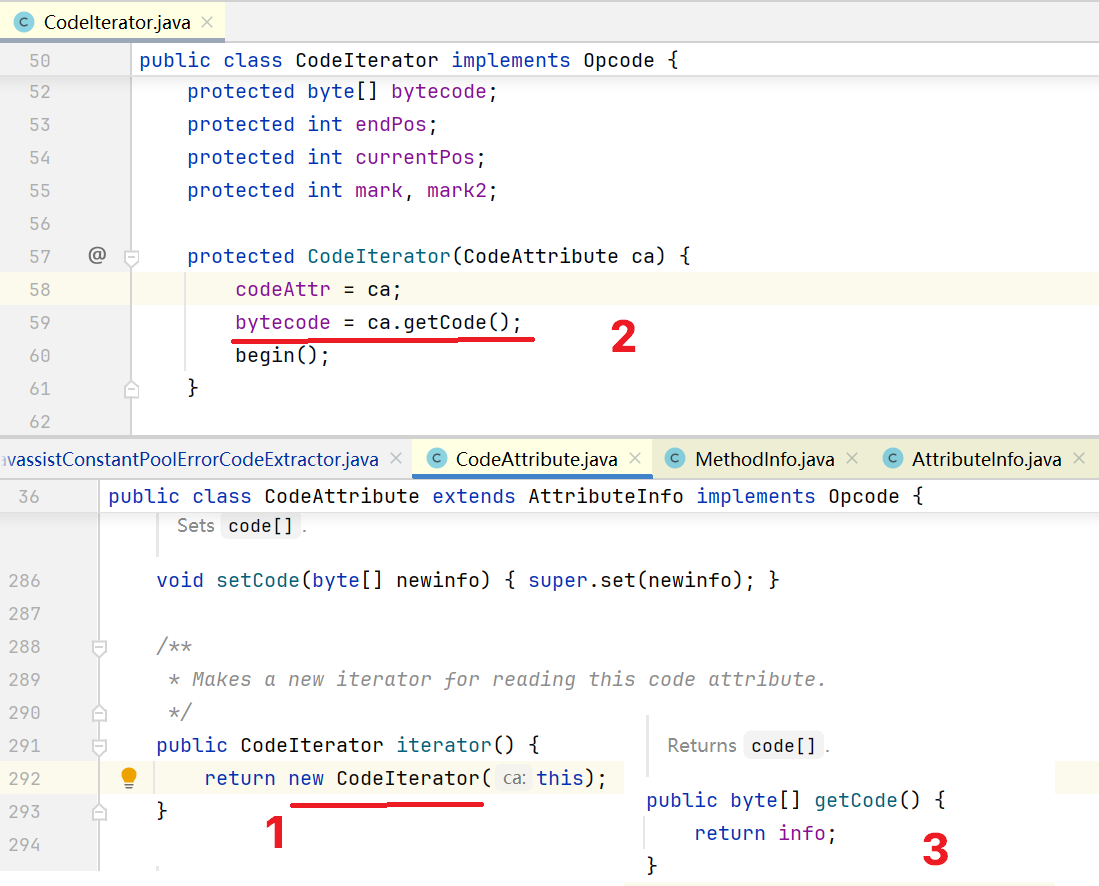
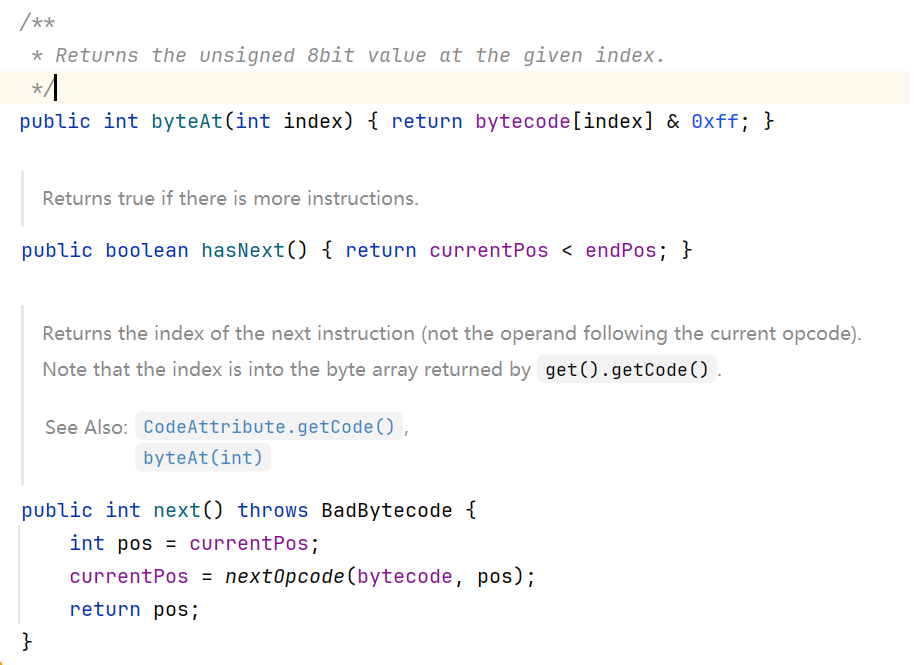
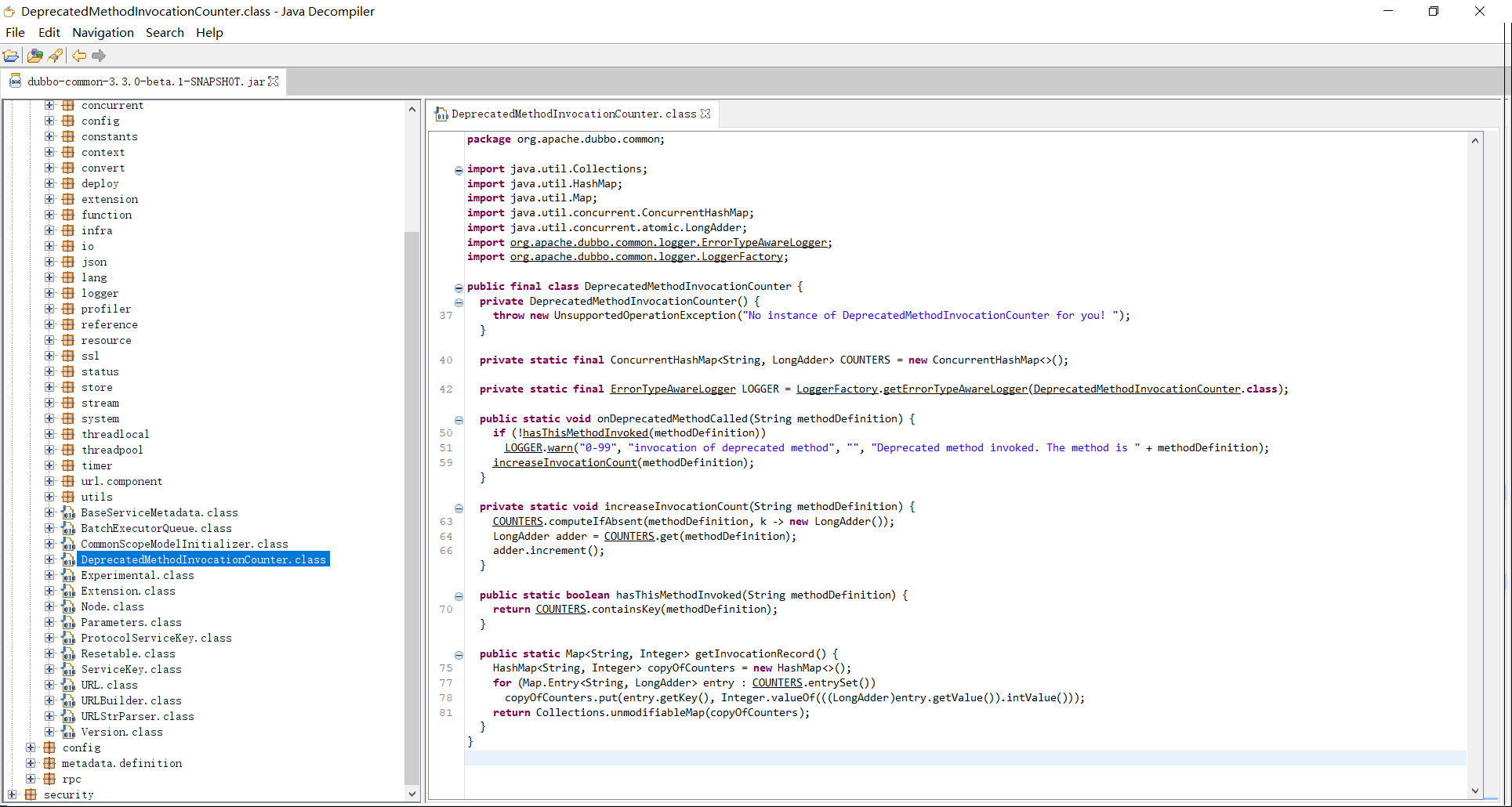
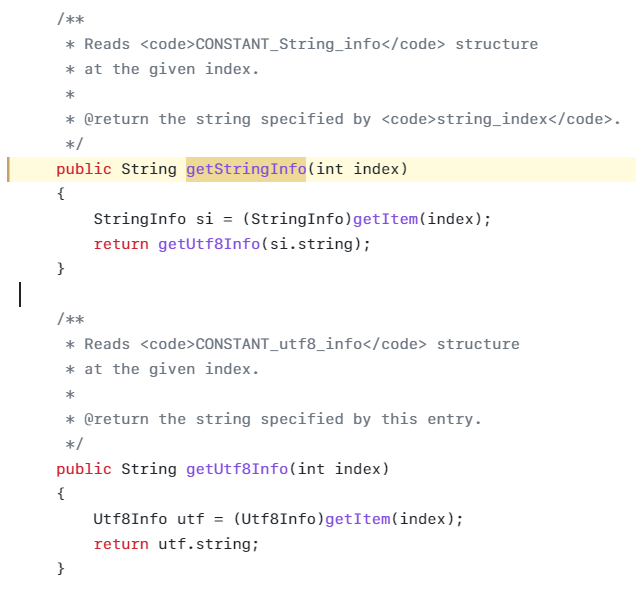

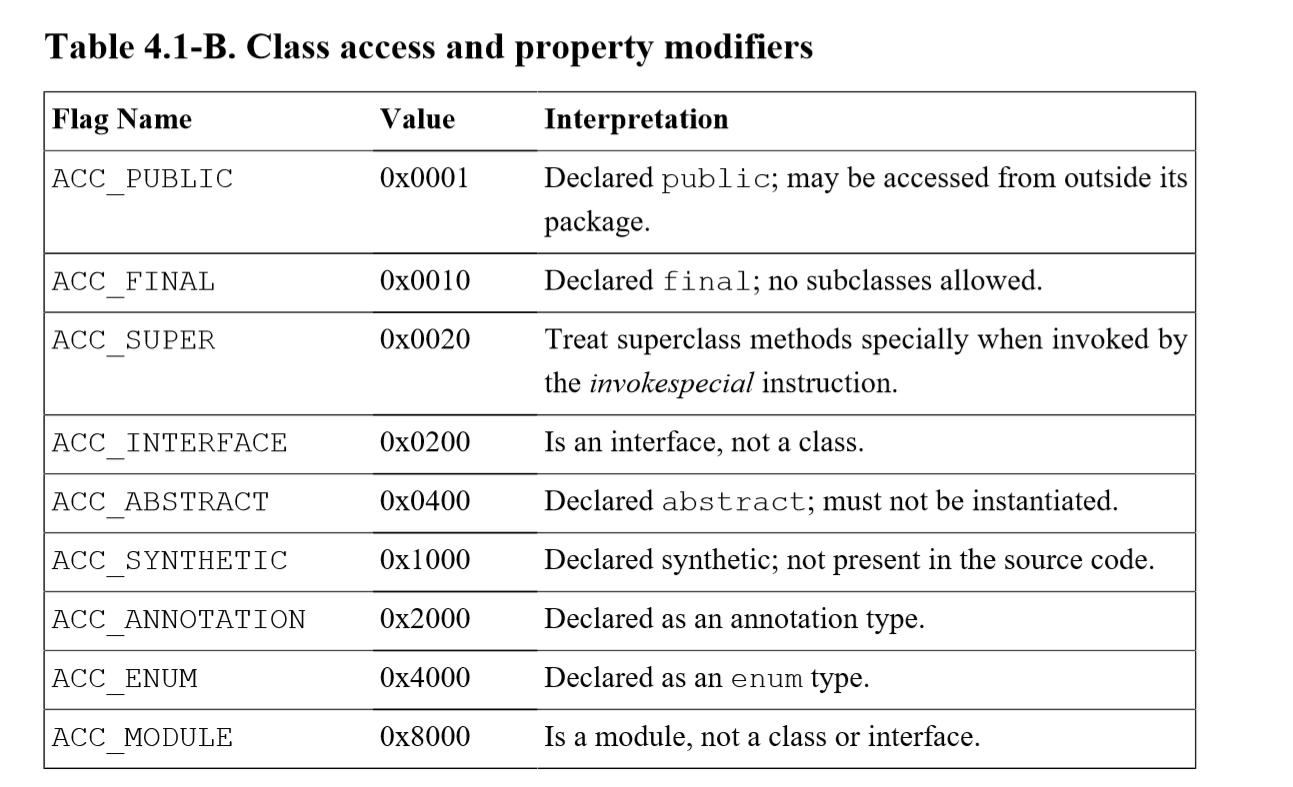

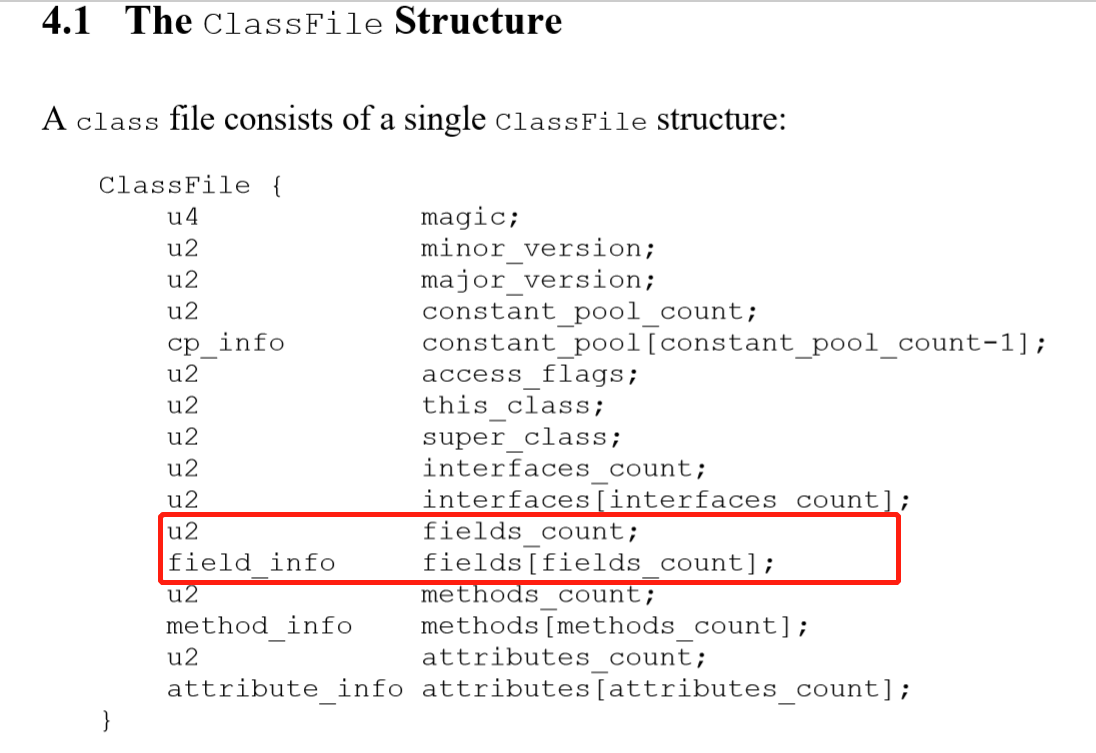


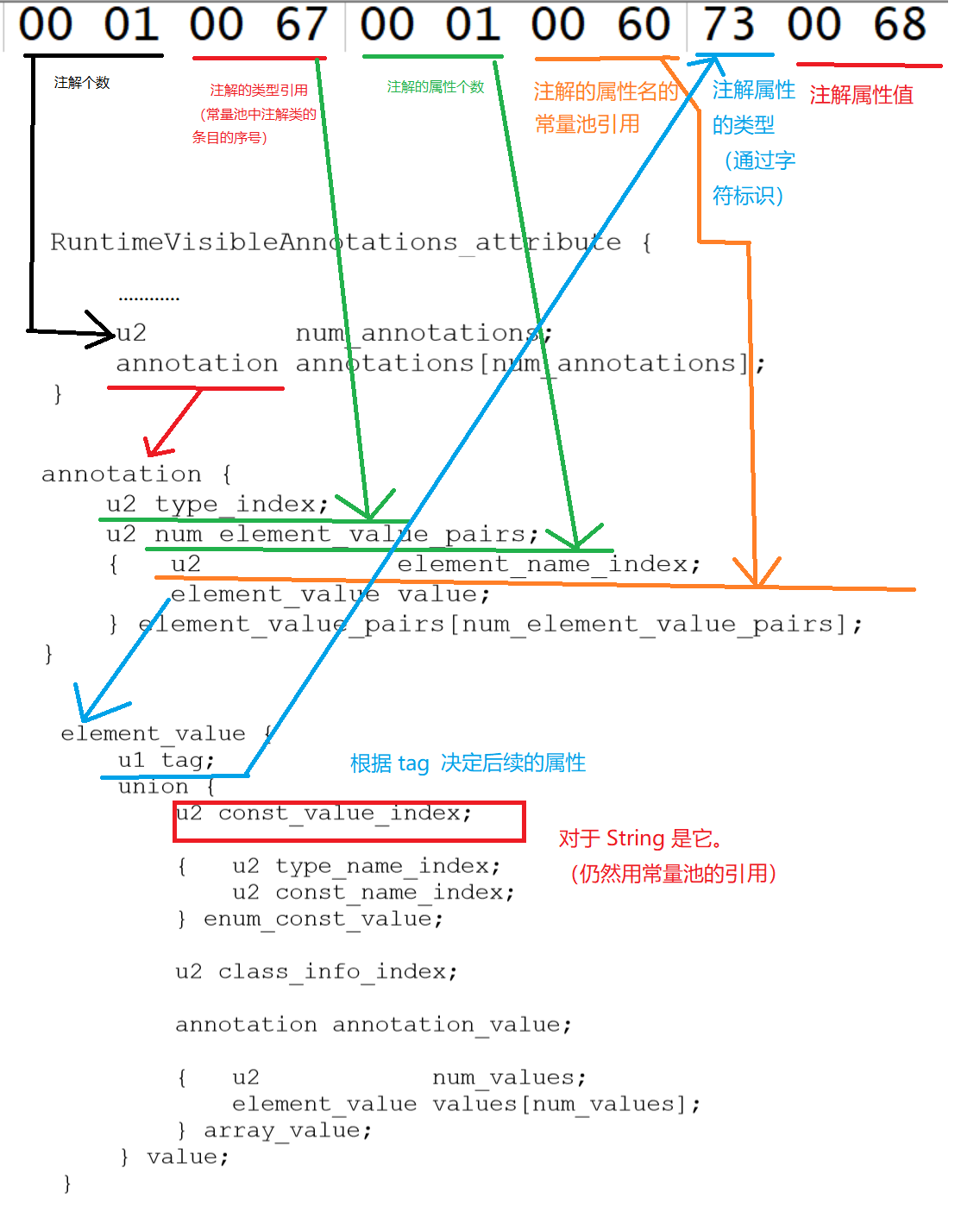
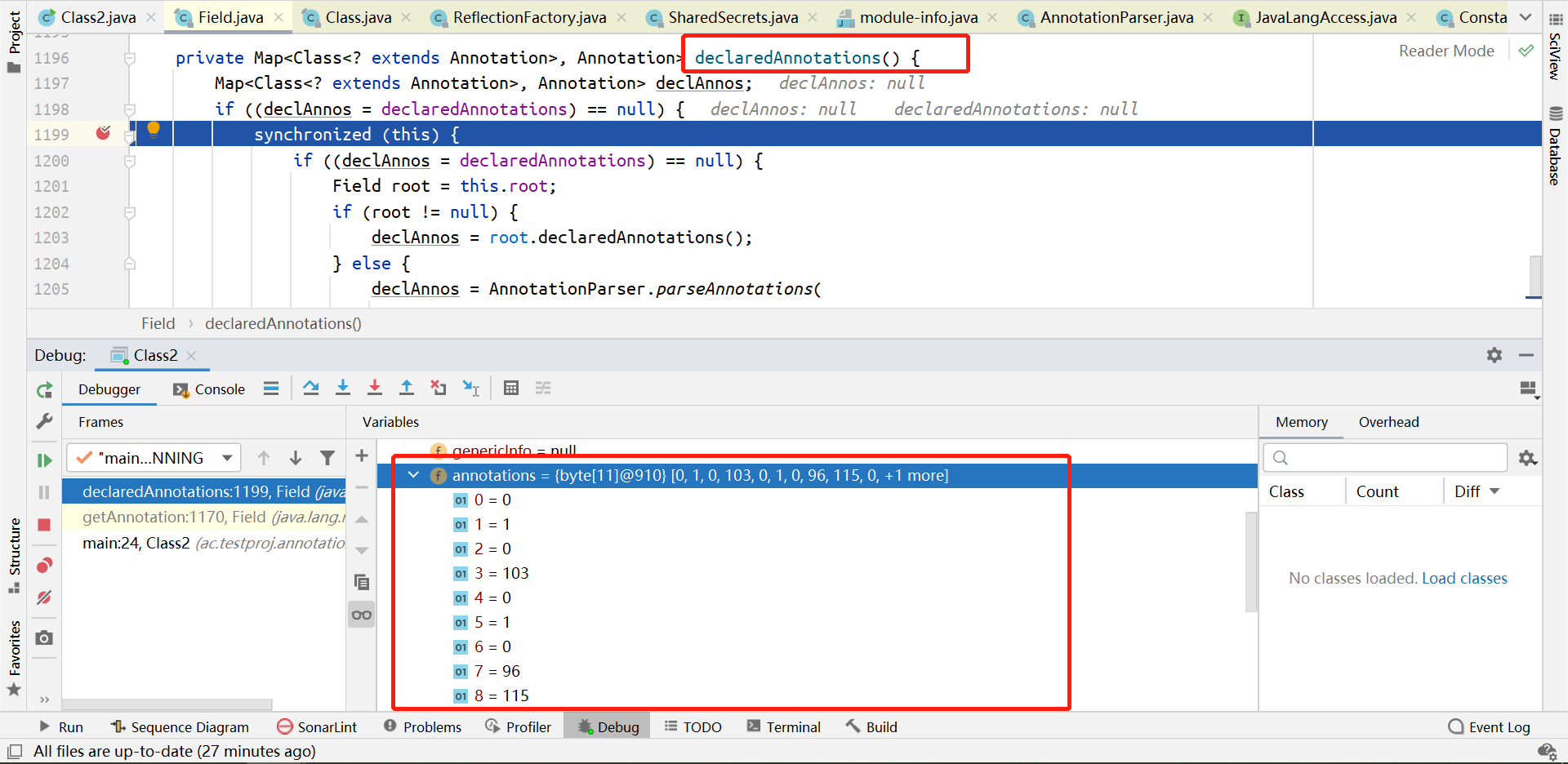

![Generated proxy class file [Fig. (Sect. Proxy) 1, 20210208]](/2021/01/27/what-happened-on-annotations/generatedFile.png)
